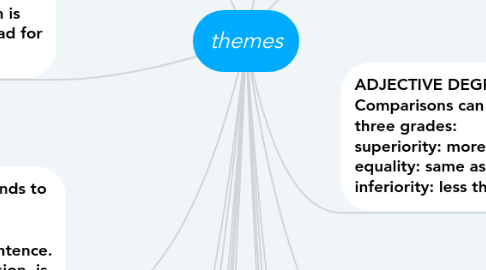themes
by Maria jose Cano

1. PRESENT PERFECT: is formed with the auxiliary ( have= he,has,hemos,han) (has=ha)
2. PAST PERFECT: Corresponds to actions that had been performed at a certain time, but with the option to repeat that action is formed with the auxiliary had for all pronouns
3. TAG QUESTION: It corresponds to questions that are asked to emphasize. They are usually located at the end of the sentence. It is formed with the expression, is it true? Is not true?
4. POSSESSIVE ADJECTIVES: there are several ways to express possession, among these we have: possessive adjectives, possessive pronouns, Saxon possessive, numeral possessive
5. DEMONSTRATIVE PRONOUNS: This, that, these, those
6. FREQUENCY ADVERTISING: It is used to define the period with which a specific activity is performed, it is usually used in this simple
7. SIMPLE FUTURE: The assistant will be used plus the subject of interrogation. To deny the future will not be used and interrogation
8. HOMOPHONE WORDS: Those that are pronounced the same but are written differently
9. ZERO CONDICTIONALO:
10. PRESENT SIMPLE: corresponds to actions that are performed routinely. The verb is written as it appears in its origin
11. SUFFIXES: Suffixes are the particles that are located at the end of a word to form another
12. POSSESSIVE PRONOMES: These describe who owns something, is formed by adding the letter "s" to the possessive adjective corresponding to the excess of the first singular person mine and the third singular person
13. CONNECTORS: In English they are called ligament because their function is to join and connect two ideas and this is a connector that allows you to connect more than one idea
14. WHO: The relative clauses are words that are used to expand the information of the subject, these do not carry tilde
15. WH QUESTIONS: They are used to ask about people, places, things, reasons, times, ways, frequencies, etc.
16. REFLECTIVE PRONOMES: Those whose action falls on the same subject that performs the action
17. ADJECTIVE DEGREES: Comparisons can be made in three grades: superiority: more than equality: same as inferiority: less than


